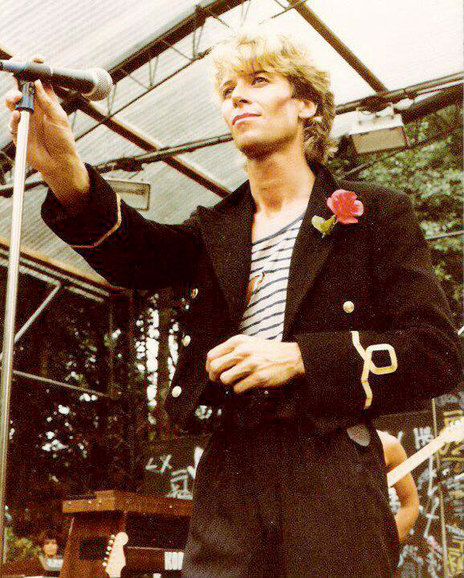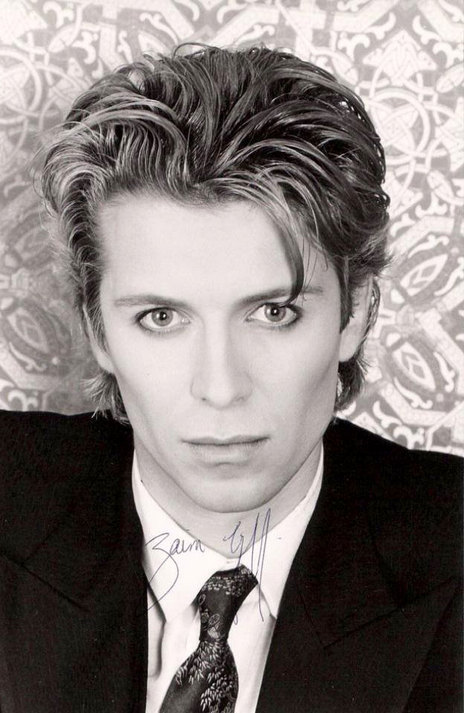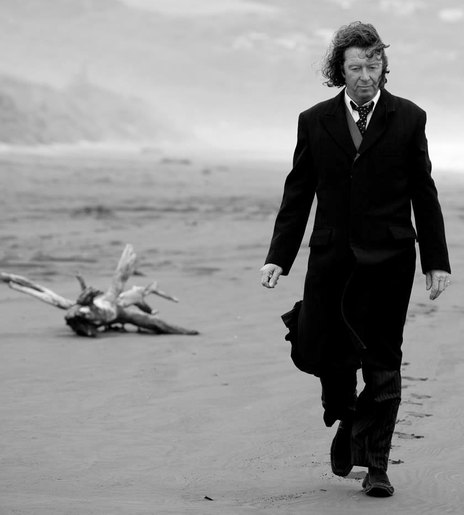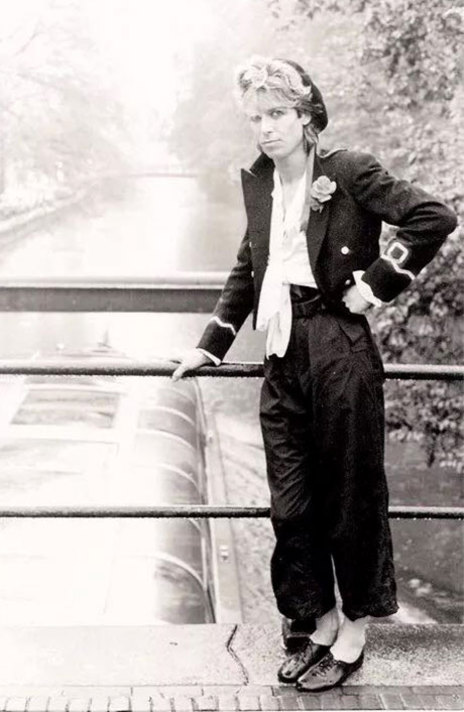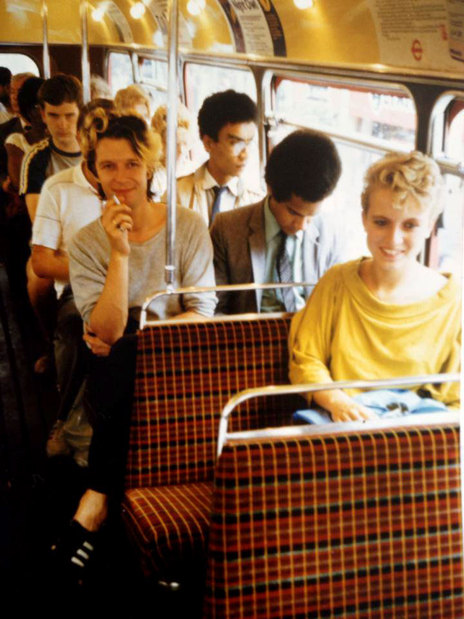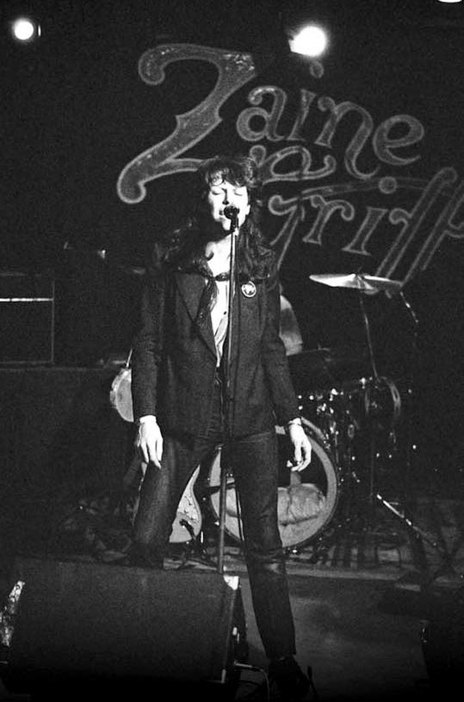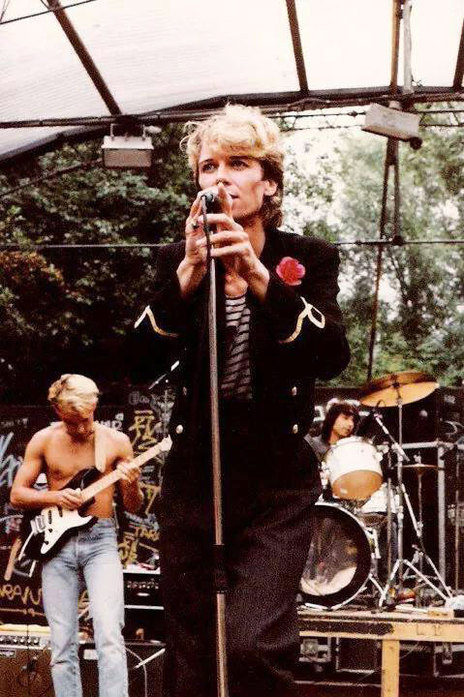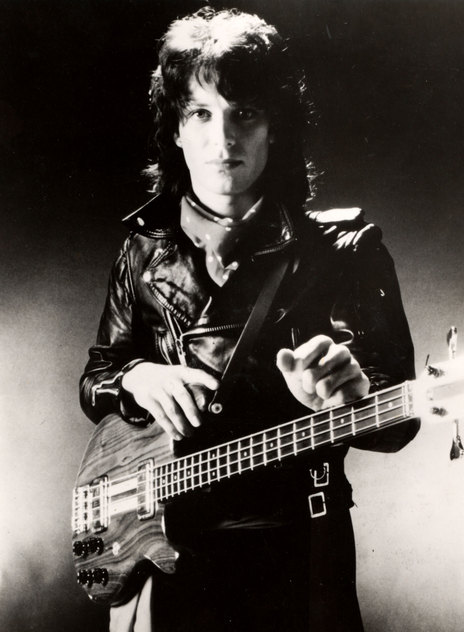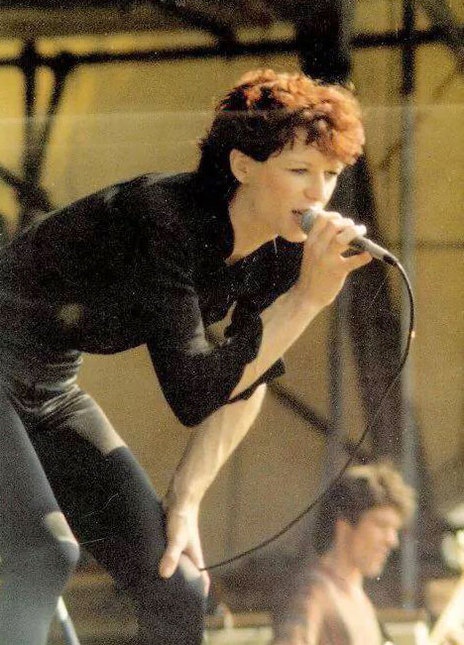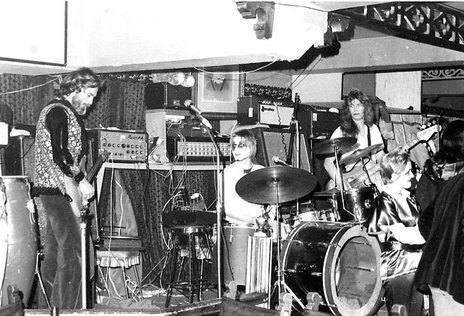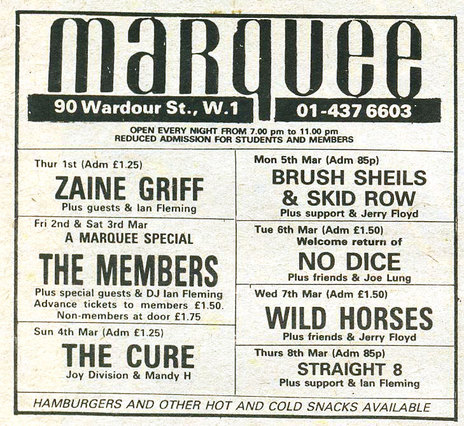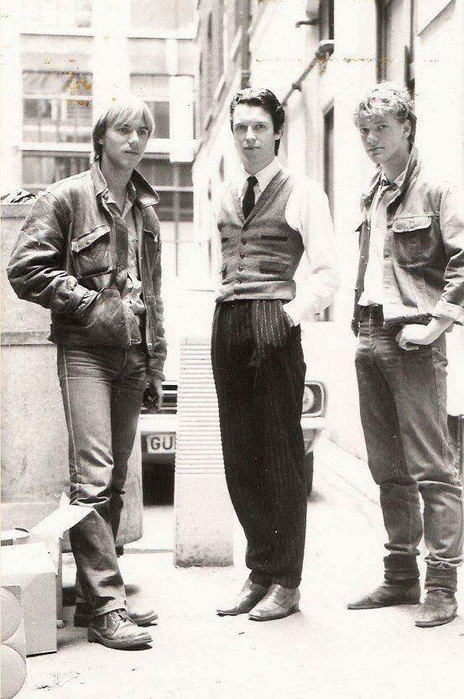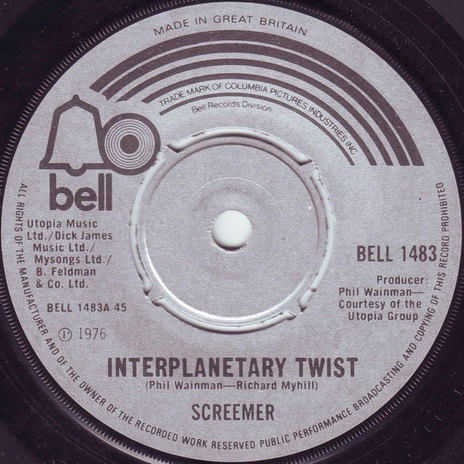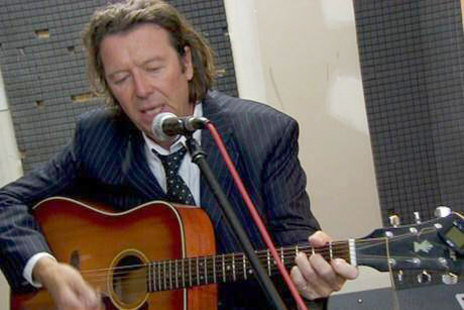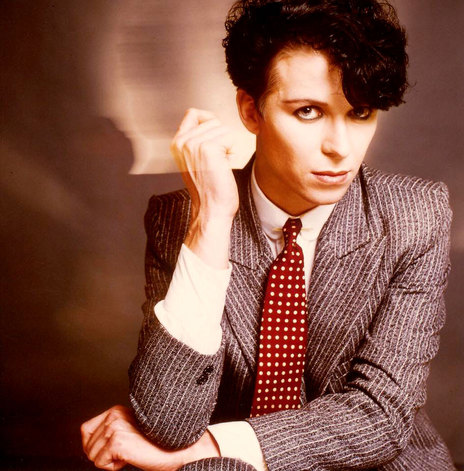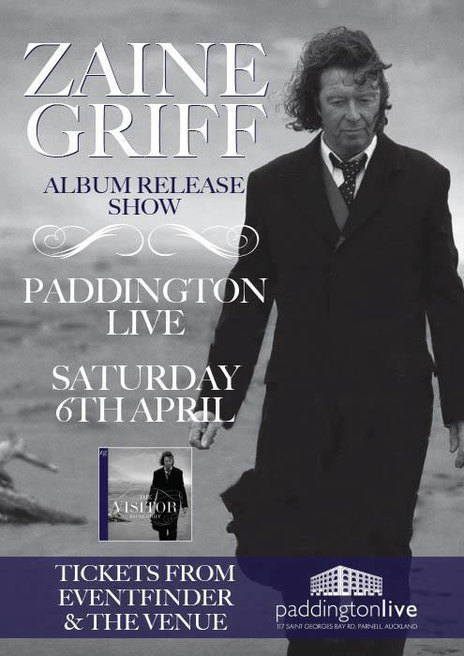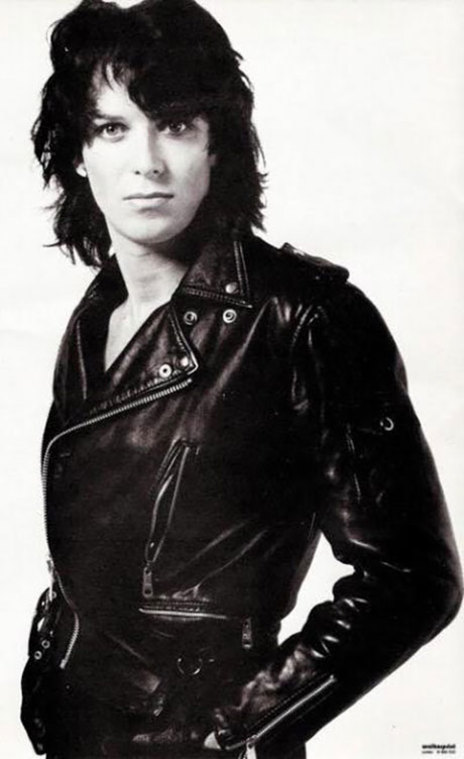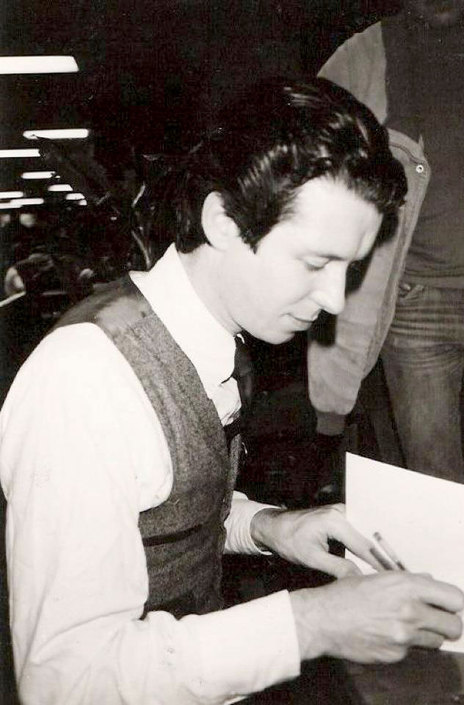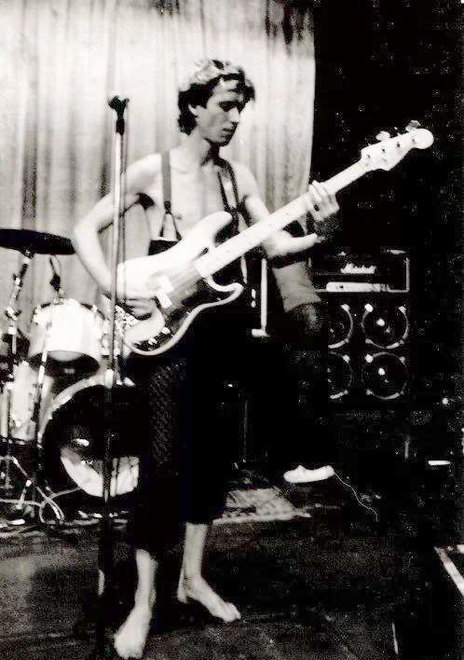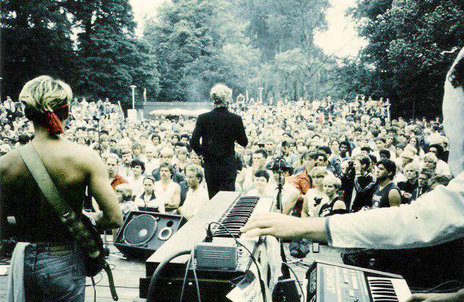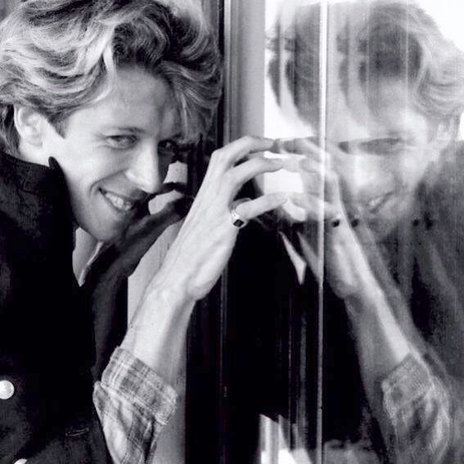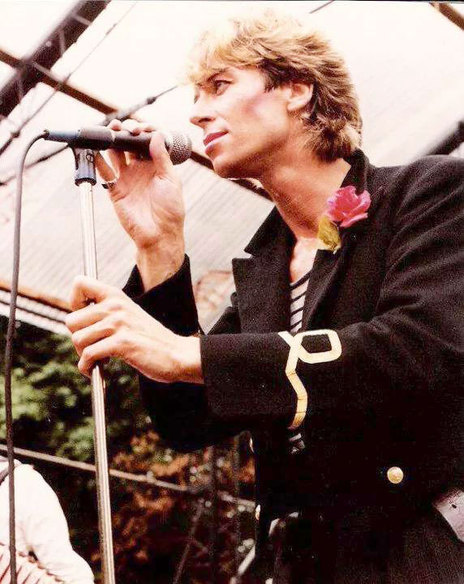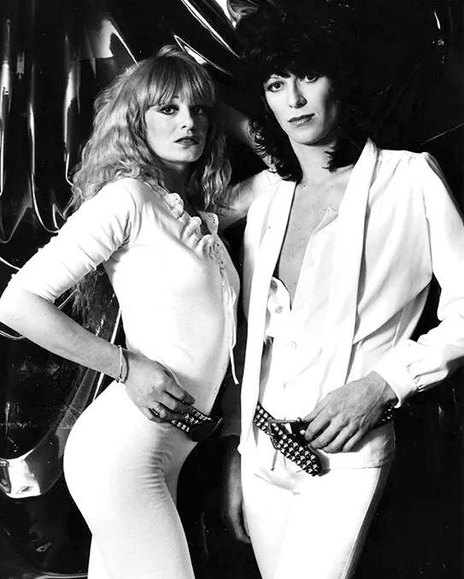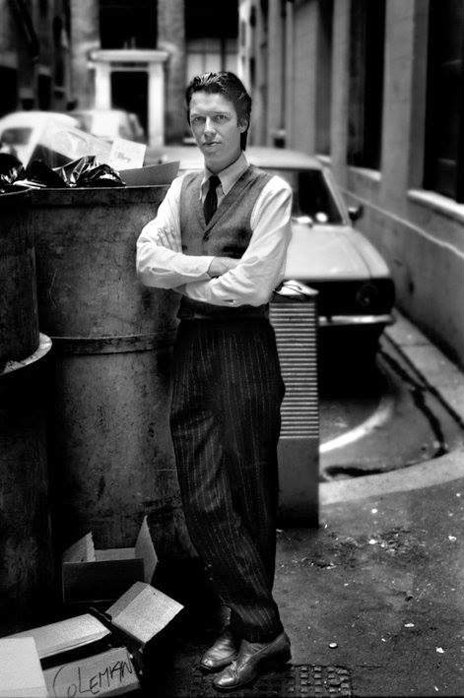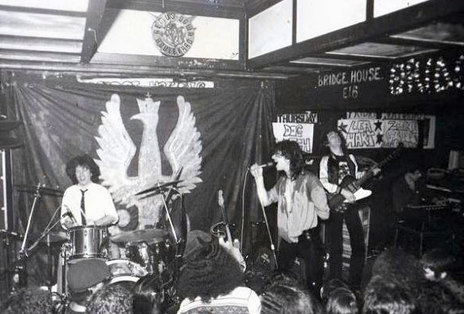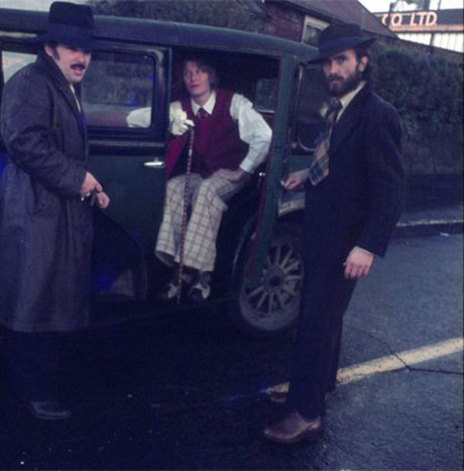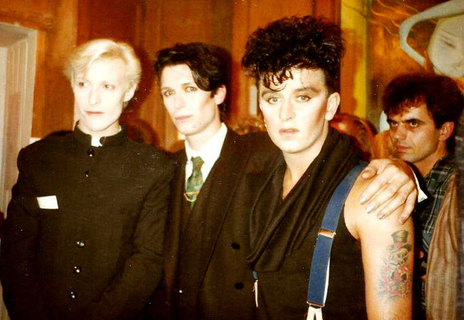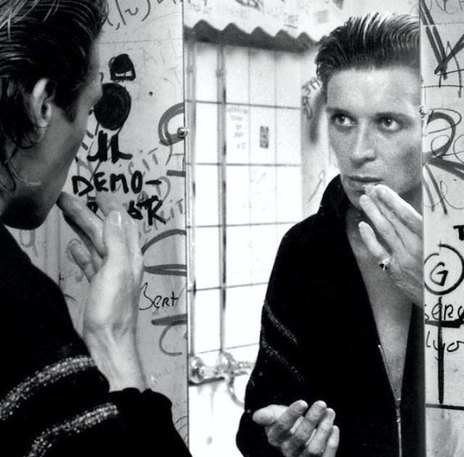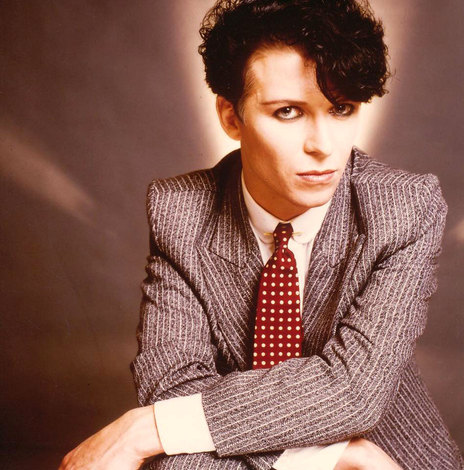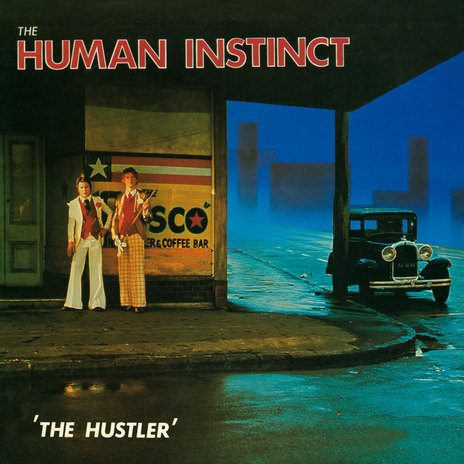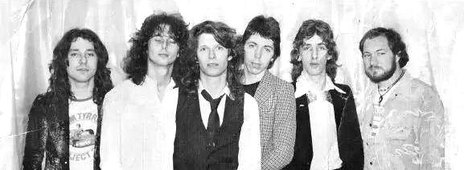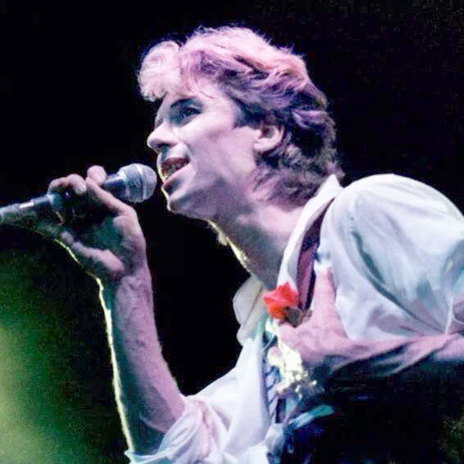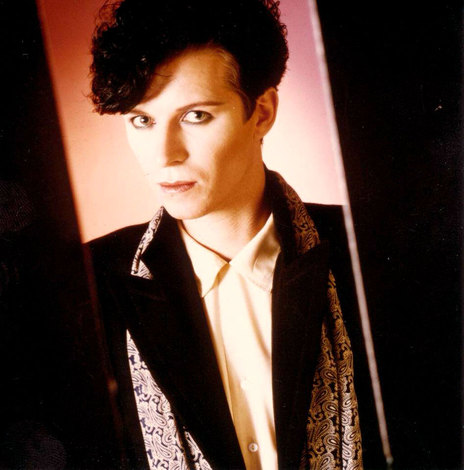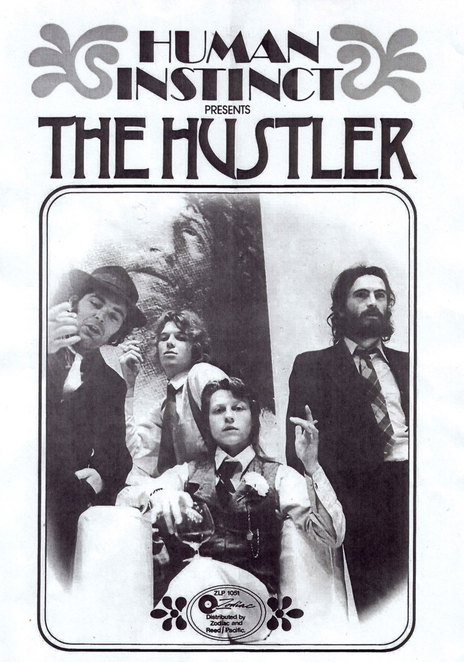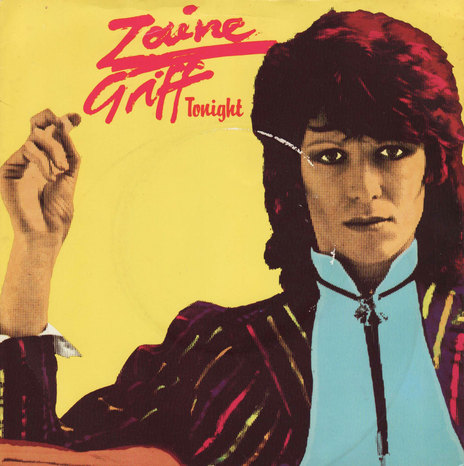Continuing to evolve rapidly as a musician and bassist, he began to play in a variety of bands while at high school. Still only 16 years old, this led him to one of the best bands in the country.
"At Avondale College I teamed up with friends and we started to play locally. Later I met some musicians who had a gig at The Montmarte in the city and got the residency there with them. Soon we had the residency at [Molly] Hatchett’s and then The Human Instinct shared the stage and shared the nights with us. Two bands on rotation. Neil Edwards' (bassist in The Human Instinct) wife was due to have a baby and the Greer brothers had set up Christie nightclub in Christchurch. Maurice Greer approached me and I joined the band replacing Neil and headed to Christchurch. "
As well as playing regularly in The Human Instinct under the stage name Glenn Mikkelson, Griff was also starting to write his own music.
As well as playing regularly in The Human Instinct under the stage name Glenn Mikkelson, Griff was also starting to write his own music.
"I was writing by then and Maurice wanted my songs in the set. Martin Hope [ex-The Fourmyula] and John Donoghue encouraged me and helped edit my work. As a band member I learnt how to arrange my music. As a band we were so tight and so connected."
His music had evolved so much that he provided the majority of the songs on Human Instinct’s fifth album from 1974, The Hustler. His contributions included the title track and the excellent ‘Funky Monkey’ and ‘Stoned Mary’. He also made a significant contribution to the band’s Peg Leg sessions in 1975. These were shelved at the time but eventually released in 2001.
Later in 1975, inspired by Greer’s stories about playing in the UK, Griff left the band and headed for London. Still only 17 and using the masters of songs written for Human Instinct as demos, he got a publishing deal with Chappells. Also, soon after arriving in London he was playing and travelling with a band called Baby Face.
"I had landed the gig with Baby Face very soon after I had arrived in the UK and learnt the life on the road which was full on, travelling all over Britain and Europe. Baby Face became Johnny Wakelins backing band and it was his success that gave us television experience."
Baby Face released one single in 1975. Soon after Griff and Alan Coats, also from Baby Face, joined another band, Screemer. They recorded two singles in 1976 and 1977 and backed Dennis Waterman. Griff also got various recording session work during this time including providing bass overdubs on The Kinks 1978 album Misfits. But he was moving on creatively and took a break from music while working under the famous dance and mime teacher, Lindsay Kemp. The catalyst for Griff’s connection with Kemp came with a chance meeting in London with another New Zealand musician.
"Not long after arriving in London by chance open the door of a shop in Charing Cross road to meet Chris Thompson who by then was the lead singer with Manfred Mann's Earth Band. I had known Chris from my Instinct days in Auckland. Billy Kristian was also in London playing with Pacific Eardrum. It was Chris’ wife Riki who introduced me to dance and movement as she managed the Dance Studio in Floral Street Covent Garden."
Through his studies in dance, he joined as an actor in Kemp’s stage production of Flowers, based on a play by Jean Genet. It was here he first met Kate Bush who was another of Kemp’s students at the time. But with encouragement from Kemp, Griff went back to music and began his solo career.
"It certainly was the hardest two years of my life in England. After 250 shows I had managed to get a great band of musicians: Steve Bolton, Bernard Clark, Matt Irvin and Clive Edwards."
T-Rex and long-time David Bowie producer Tony Visconti was brought in to produce the record, which was completed in eight weeks.
With the support of a management company and dedicated PR, he secured a contract with Warners and began recording his debut album with keyboardist and future film soundtrack composer Hans Zimmer. The material for the album was drawn from a set of road tested songs that were played as close to live as possible. T-Rex and long-time David Bowie producer Tony Visconti was brought in to produce the record, which was completed in eight weeks.
The album, Ashes and Diamonds, was released in 1980 and is a sophisticated set of new wave pop songs. Undoubtedly influenced by Bowie and Kemp stylistically, Griff’s voice comes through strongly particularly on the excellent singles taken from the album ‘Tonight’ and its title track as well as ‘She’s My Man’. Other songs from the album, like ‘The Scandinavian’, are less immediate but no less excellent and point to broader electronic territory he would explore on his next album.
During the recording of the album, Visconti was asked by Bowie (who was recording Scary Monsters at the time) to put together a band to record some songs for an appearance on the Kenny Everett Video Show. Griff’s meeting with Bowie was an interesting one.
Visconti in his autobiography:
"As I was working with Zaine at the time I decided to use him on bass to play along with my friend Andy Duncan on drums. I should have predicted that Zaine would dress to the nines for the studio recording, while Bowie was just having an ordinary day in his civvies. His initial reaction to Zaine was not favourable and he looked upon my use of Zaine as some kind of an insensitive joke. I must admit I found it humorous."
For his second album Figvres released in 1982, Griff assembled another strong cast of musicians. They included Yukihiro Takahashi of Yellow Magic Orchestra, who Griff wrote a song for on his solo album, Warren Cann of Ultravox and Billy Kristian. The album also features Kate Bush on backing vocals on one of its highlights, ‘Flowers’, a tribute to Kemp.
The album has an orchestrated synth-pop sound, in vogue at the time, and as a result sounds more dated than Ashes and Diamonds. Although not as consistent as his debut there are some excellent pop songs on the album like ‘Fahrenheit 451’ and ‘83rd and 4th’ inevitably a product of the strong creative partnership with Zimmer at the time.
"Hans was coming into his own. I gave him free licence to explore his capabilities. You can hear that. If I sung a counterpoint against the track he would answer with another which presented another and so on, his arrangements were so beautiful because he listens to you as an artist and hears all the opportunities to delve into."
Soon after promoting the album, Griff became involved in Zimmer’s Helden project with Cann and another cast of stellar musicians. The band released a couple of singles and an EP. An album was also recorded in 1983 but remains unreleased.
In 1983, Griff released the excellent electro funk single, ‘Swing’. Work was started on a third album with Japan and Roxy Music producer John Punter, but other things from an increasing broad set of creative interests got in the way.
"I went into the studio with Midge Ure to do my third album and around that time I did backing vocals for Gary Numan. I was also cast in Starlight Express and worked with Trevor Nunn of the Royal Shakespeare. I was also painting and did an Exhibition at the Ebury Gallery, so by now I was burnt out. John Punter wanted to record me so I went into Air and did three tracks."
A European tour and a residency at the Marquee Club in London further stalled work on the album. After six months spent in Amsterdam and seeing one of the best bassists in the world performing on the street Griff realised he didn’t have it in him to complete the album or continue with music.
"When I saw Jaco Pastorious busking in the streets I asked him if he would record with me ... I realised I had just witnessed a genius and I asked myself if I had the strength to do more. I physically could, but mentally could not."
In Auckland he was involved in a range of things, including opening the Jazz Palace, a not for profit venue.
Soon after in 1984, exactly 10 years after leaving, Griff returned to New Zealand. Though he couldn’t listen to music for some years after his return he was never far from it. In Auckland he was involved in a range of things, including opening the Jazz Palace, a not for profit venue. Eventually Griff started writing again, spurred on by a trip to Prague in the Czech Republic.
Griff reunited with Billy Kristian, and together they started working to record his third album. Drawing on material written in Prague, the recordings were made in Kristian’s studio in Taupo Bay. The resulting third album, Child Who Wants The Moon was released in 2011, almost 30 years after his second. Only two years later Griff, working with Eddie Rayner (Split Enz), released another album, The Visitor.
By this time Griff was performing again and at the end of 2012 was a guest at one of Toyah’s live shows in London. Since then he has also played shows in Auckland and Japan. With the recent re-release of his first two albums, an album of previously unreleased demos (Immersed, demos 1978 to 1983) and a loyal overseas fan base, Griff seems as busy and inspired as he ever was.
